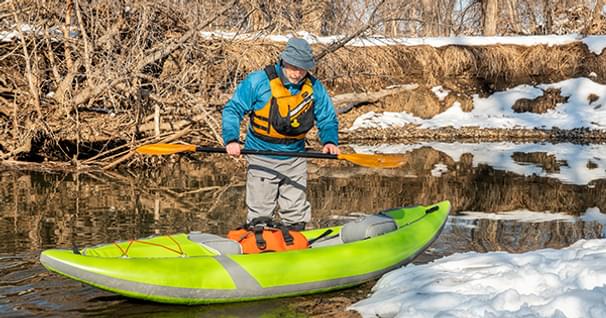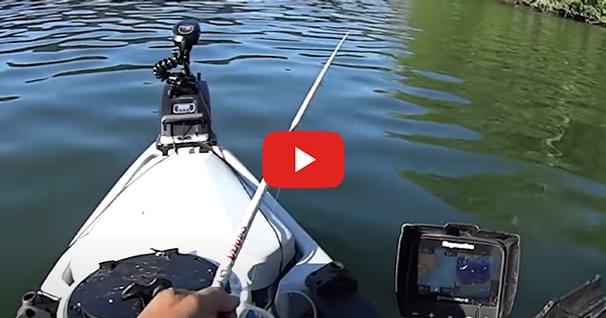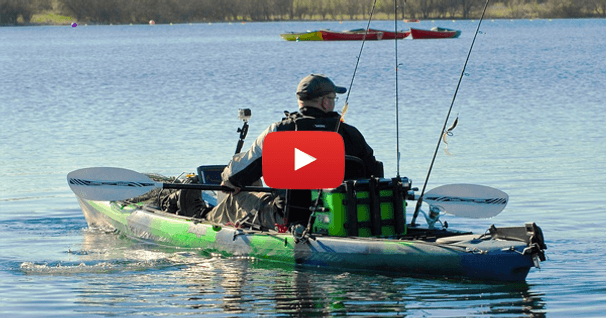Paddling a Solo Canoe in a Headwind
This short video will address some of the things you can do in this situation where you have to paddle a headwind when paddling a canoe solo. Because a canoe is normally weighted slightly stern heavy, sudden gusts of wind can catch the bow and swing it around. It takes a lot of effort to swing the canoe back into the wind.
The yellow circle [in the graphic] shows the steerage points where you can gain control.
To control the canoe, you can either push or pull the water with the paddle. A pull on one side has the same effect as the push on the other side. A push of the paddle behind you is the same as a pull on front.
Hand Position / Leverage
Sliding your bottom hand higher up on the shaft on the paddle extends your reach, and that in turn gives you much greater leverage on the canoe making any steering effort much more effective. It's a lot harder to bring a canoe around by attempting the steer the back of the canoe, it's more effective to swing it around by concentrating on the front of the boat. Extending the reach helps, but if you're still struggling, make it easier by leaning forward. That increases the leverage, and it also shifts the weight forward reducing the effect of the wind on the bow. Once you get the canoe under control you can return it to normal seating position.
Paddle Strokes
In using the Slicing Bow Draw, the paddle is pulling towards the canoe - turning it in that direction. The key here is the underwater recovery of the stroke, because the paddle is in constant contact with the water, the wind never gets a chance to grab the canoe and swing it away.
For slight corrections, it's helpful to use a Bow or Indian Stroke; again the paddle is in constant contact with the water. At the end of the stroke you can give it a little push to steer towards your paddling side, and just before you begin the power phase you can give it a little pull. The pull of the bow will have greater effect because that's the end of the canoe that will most be influenced by the wind.
You have two options for pushing the bow back into the wind away from your paddling side: a Bow Pry Stroke will work but you use the non-power phase to paddle and that pushes you backwards. The more efficient way to pry the bow back into the wind is to incorporate power into the stroke, this is called theBow J Stroke as the motion is the same, it's just done at the front of the canoe not behind you.
Using the Wind
If your efforts to control the canoe are getting frustrating, you can always give in and use the wind to help gain control. The light end of the canoe usually the bow, will always swing downwind in gusts. Since the canoe will stay pointed in that direction without any effort on your part, the easiest way to head in the direction you want is to simply safely turn around in the canoe. Now, the bow is heavy and stays anchored in your direction of travel. That let's you put more effort into power strokes because steering is much easier. Once you get to a sheltered location, you can turn around again and return to normal paddling.
Paddling a canoe should be fun, if you find that you're struggling with any aspect, keep in mind that there is always a way to take advantage of physics in paddling. Your mantra should be: "Paddle Smart, Not Hard."
This video and article are courtesy of www.blazingpaddles.ca
Related Articles
Flexibility is always a good topic of discussion when it comes to kayaking. Depending on our style of…
Kayak Catfish does some trolling with crappie magnets to catch some catfish bait.
How many of you have ever heard that paddle craft (vessels under oars according to the Navigation Rules)…
More times than not, the reason you aren't catching big fish is not because you aren't doing enough…



